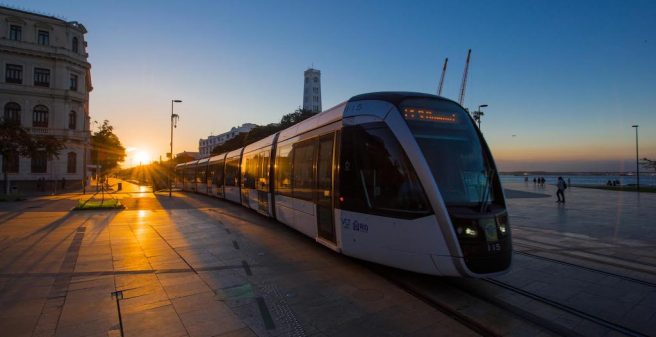
Rio de Janeiro is known for its stunning city landscape between mountains, the Jesus the Redeemer statue and many beaches, the related beach life and its vibrant samba – among other things. In terms of public transport, one of the most important landmarks used to be the Santa Teresa tram line, called “Bonde” or “Bondinho”. Since 2016, Rio de Janeiro also counts with a modern light rail system which started operation just in time for the 2016 Summer Olympics. Its official name is VLT Carioca – VLT stands for veículo leve sobre trilhos which translates into Light Rail Vehicle (LRV) in English. Carioca is a demonym used to refer to anything related to the City of Rio de Janeiro as well as its eponymous State of Rio de Janeiro. The first phase of the LRV system between Novo Rio Bus Terminal and Santos Dumont Airport was inaugurated on 5 June 2016.
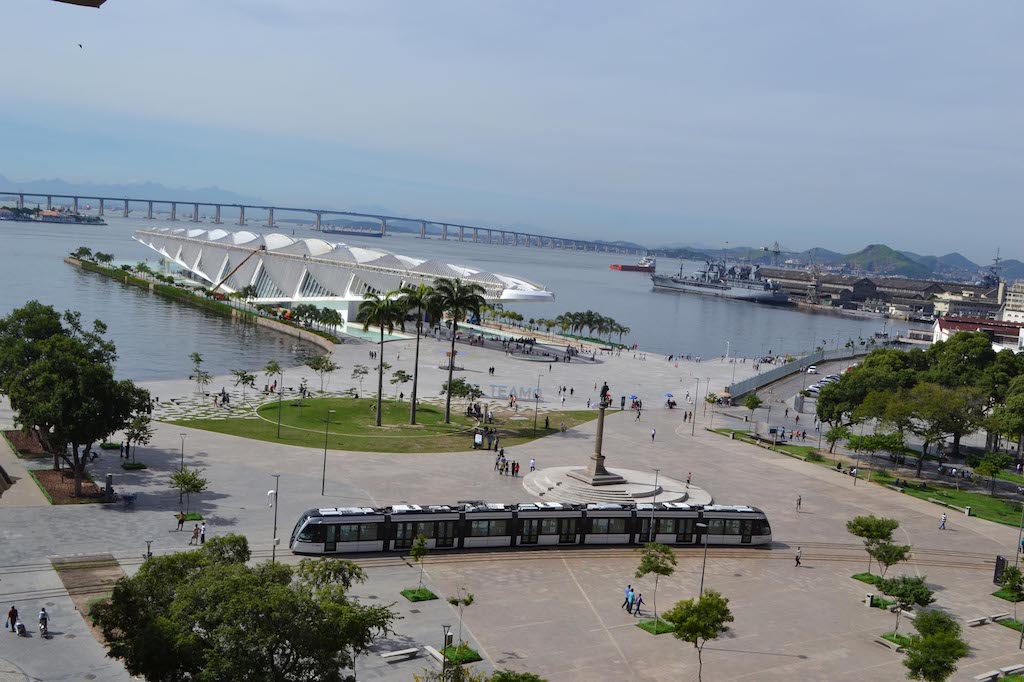
Rio’s LRV system is fully operated without catenary I © VLT Carioca/ Alex Ferro 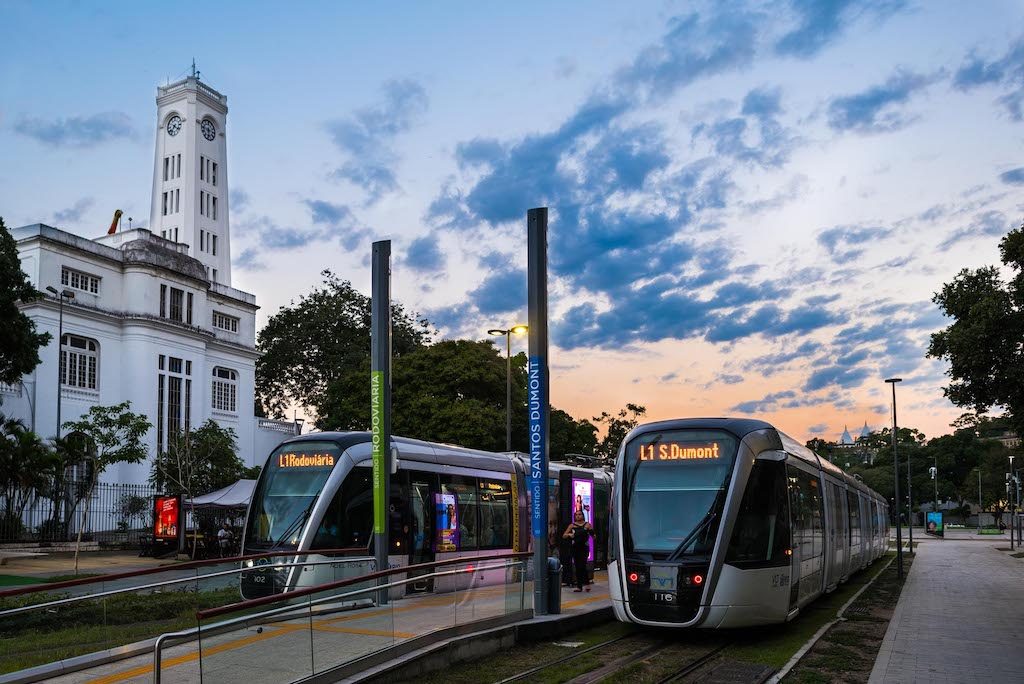
Citadis at the Parada dos Museus I © VLT Carioca/ Alex Ferro
Last extension opened
With the last 1.3 km section of line 3 between Candelária and Central do Brasil, inaugurated on 26 October 2019, the 14 km light rail network has been completed. Extensions of line 1 and line 2 have subsequently been put into operation in 2017.
The network now consists in the following lines:
- Line 1: Santos Dumont Airport – Praia Formosa
- Line 2: Praça XV – Praia Formosa
- Line 3: Santos Dumont Airport – Central do Brasil
The opening of the last section has been delayed due to disagreements between the local city authority and the operator in terms of financing.
Construction of the Public Private Partnership project started in 2013 and has been carried out by the consortium Invepar, Odebrecht TransPort, CCR, RioPar, Benito Roggio Transporte and RATP. The consortium is also operating the system for a duration of 25 years.
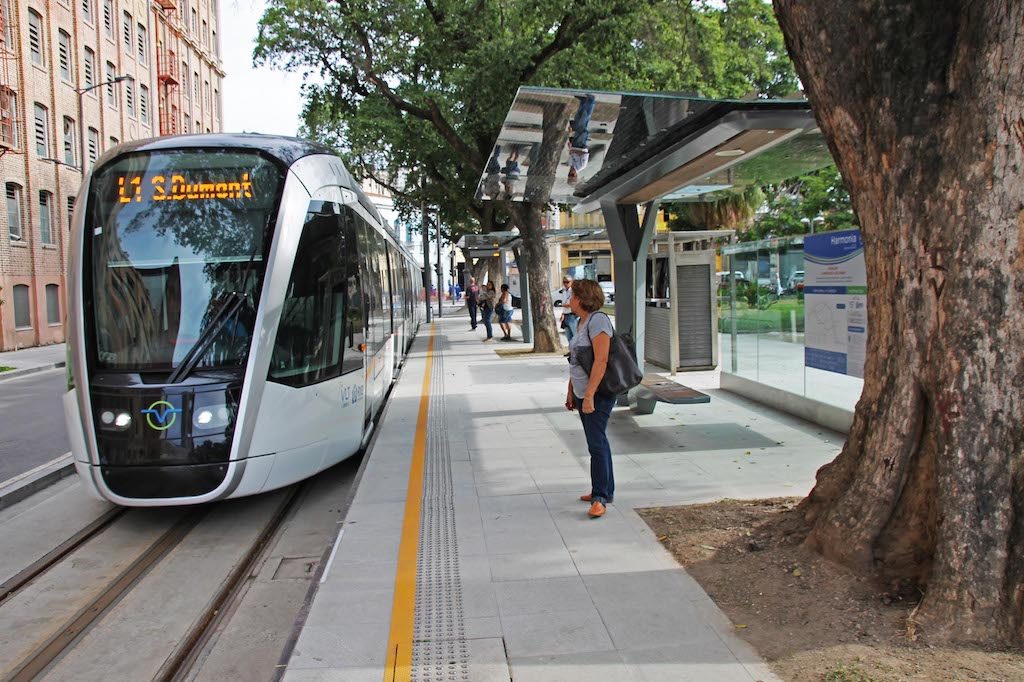
Tram stop Harmonia of line 1 which has a single line alignment in the city centre I © VLT Carioca/ Alex Ferro 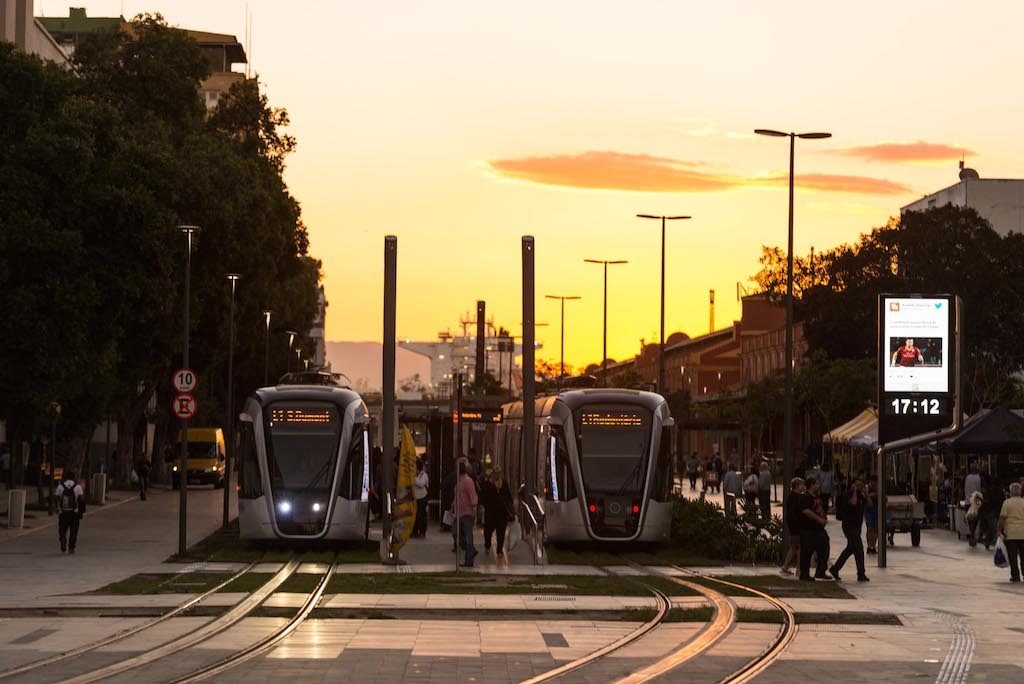
VLT Carioca during sunset I © VLT Carioca/ Alex Ferro
Reportedly, the construction cost of the system has been of 1.157 billion Reais (ca. 260 million Euros) of which 525 million Reais (ca. 116 million Euros) have been funded by the federal government and 632 million Reais (ca. 140 million Euros) by the PPP.
So far, the light rail system has been a success. In 2018, a total of 17 million passengers have been transported. Daily ridership reached 80,000 passengers daily.
Catenary Free Operation with Alstom Citadis
The network is operated with 32 Alstom Citadis 402 low-floor trams of which five have been built at Alstom’s factory in La Rochelle, France and 27 at the new Alstom production site in Taubaté in the state of São Paulo. The 7-section trams have a capacity to carry 420 passengers each. Electricity supply takes place via APS, Alstom’s ground level electricity supply which is also being used in Bordeaux, Reims and Orléans among other cities in order to avoid catenary in the city centre. In Rio, the 80 % of the system is operated with APS ground level power supply. The remainder is operated with on-board supercapacitor energy storages (SRS). The trams are still equipped with standard pantographs which are used in the depot.
In Rio, the 80 % of the system is operated with APS ground level power supply. The remainder is operated with on-board supercapacitor energy storages (SRS). The trams are still equipped with standard pantographs which are used in the depot.
Trams in Rio
Rio used to have an extensive tram system which has been abandoned in 1967 with the exception of the historical Santa Teresa tram. It is both a famous tourist sight and a means of transport of the historic Santa Teresa district. Its probably most beautiful point is the Aquueducto da Carioca, which oversees the historic city centre. After a major accident with casualties in 2011, the system has been halted until 2016 and the old 2-axle trams have been replaced by replica new-built trams, built in 2013 – 2014 by the local company T’trans.

Parked 1st generation trams during the standstill in 2012 I © UTM 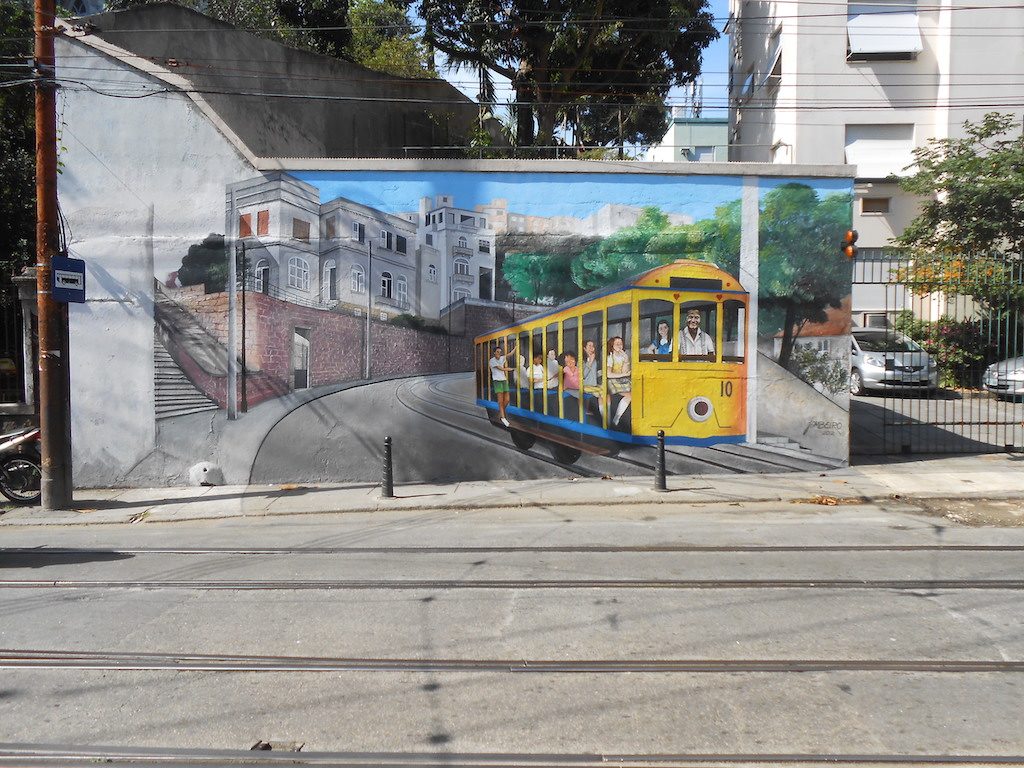
Wall painting of the Santa Teresa tram I © UTM 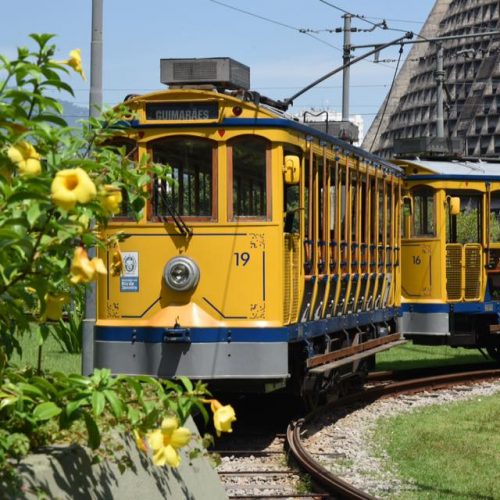
Modern replica of the historical tram I © Rio Tur
A network plan of the new light rail can be found here:
http://urbanrail.net/am/rioj/rio-tram.htm
07.11.2019
